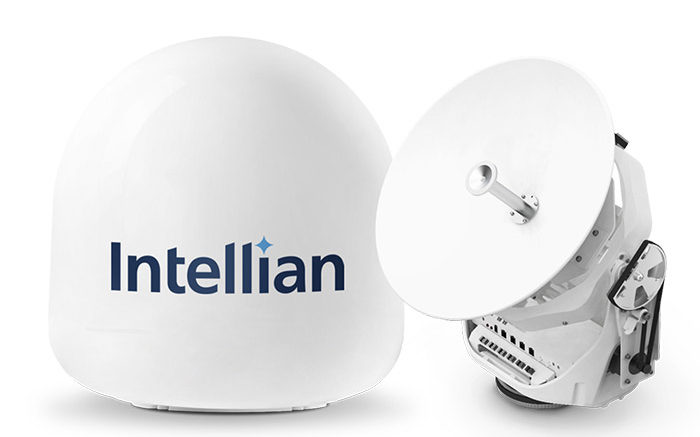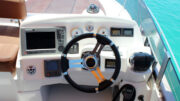Because I know you’re thinking, “They say not to even touch a satellite dish on the roof. How can it possibly work on the high seas?” And you would have a point, because there’s no way a satellite dish on your roof would work at all if your house were moving the way a boat would.
If you understand a little bit about what goes into marine satellite dishes, you’ll understand why they’re quite a bit more expensive than traditional land-based dishes. There are two factors at work here.
The gyroscope, an old invention that’s still awesome

Maybe you had a gyroscope as a toy. It’s a special kind of top that, while it’s spinning, has the ability to stay in the same position even if that position wouldn’t work if the top weren’t spinning. Gyroscopes are fun for young geeks but they’re much more important than that.
A gyroscope will keep its position and orientation in space, in other words it will stay put even if the stuff around it is moving. This special property means that you can put a gyroscope under a satellite dish and as the boat pitches and rocks, the dish will stay in the same position. Another way to keep a dish in the same position in space is to put a very heavy weight under it and put it in a bowl-shaped space where it’s free to move. This is a much simpler technique, and in many cases it’s used as well as the gyroscope technique.
Gyroscopes are used in your marine instruments as well as in planes. In the past, they were used in car navigation systems, before GPS became so reliable. While there isn’t an old-school gyroscope in your phone — it would take up too much space — there’s an accelerometer, which is a circuit which does many of the same things. By determining whether or not your phone is level, it can help determine its real position in space.
Modern marine satellite systems sometimes use gyroscopes and accelerometers to help the system orient itself. But, there’s usually a lot more going on.
Computers, computers, computers

The other thing a marine dish has that your dish at home does not is a computer that is constantly checking signal quality, comparing it to past readings, and making automatic adjustments to the dish. This is done very quickly at the first sign of any drop in signal strength. Such computer power and responsive motors are fairly expensive, and since they’re not needed on a home, they’re not used.
The electronics in a satellite system depend on reliable characteristics of a satellite signal. The “beam” put out by satellites is strongest at the center, stays strong for a short distance, then tapers off quickly. Marine satellite systems are constant looking at the strength and quality of a signal to determine where the “shoulder” of the signal is. That’s the area where it begins to fall off quickly. As soon as the system find that shoulder, it reaims itself to get back in the center of the beam. The system works so quickly and so often that you don’t notice it.
So really the bottom line is…
Let’s say you were willing to spend thousands of dollars on a satellite dish for home. You wouldn’t have to worry about aiming, ever. But that does seem a little bit silly, Right? I mean, considering that for most of us at least, our homes rarely (if ever) move. On the other hand, if you’re looking for a marine or RV satellite system, that’s just what you need. And if you need satellite TV on the go, there’s only one place to turn: Signal Connect. We can help you get the best entertainment anywhere you go! Call us at 888-233-7563 or fill out the form below.We’ll get back to you, usually within one business day!





